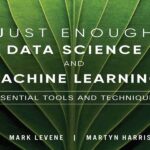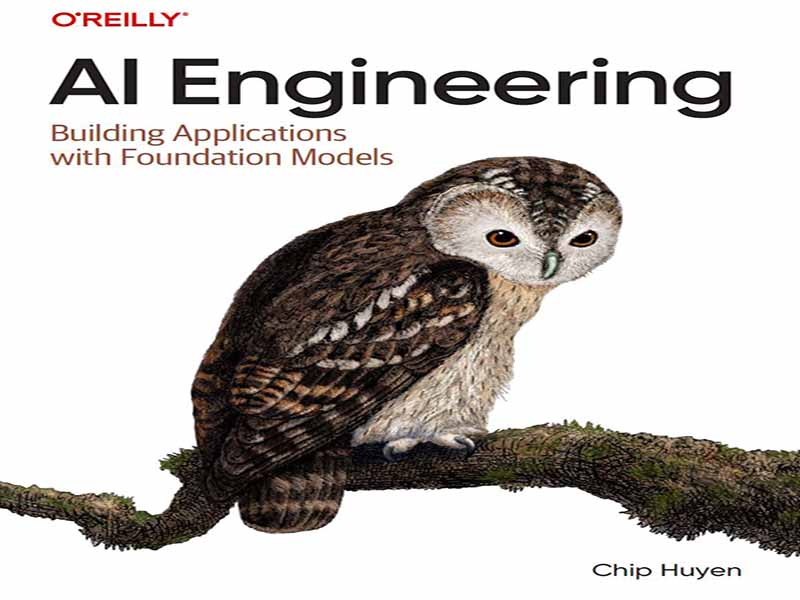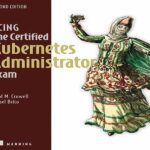- عنوان کتاب: AI Engineering -Building Applications with Foundation Models
- نویسنده: Chip Huyen
- حوزه: مدلهای بنیادی
- سال انتشار: 2025
- تعداد صفحه: 535
- زبان اصلی: انگلیسی
- نوع فایل: pdf
- حجم فایل: 8.54 مگابایت
وقتی ChatGPT منتشر شد، من هم مثل بسیاری از همکارانم گیج شده بودم. چیزی که من را شگفتزده کرد، اندازه یا قابلیتهای مدل نبود. بیش از یک دهه است که جامعه هوش مصنوعی میداند که افزایش مقیاس یک مدل، آن را بهبود میبخشد. در سال ۲۰۱۲، نویسندگان AlexNet در مقاله برجسته خود خاطرنشان کردند: «تمام آزمایشهای ما نشان میدهد که نتایج ما را میتوان صرفاً با انتظار برای پردازندههای گرافیکی سریعتر و مجموعه دادههای بزرگتر بهبود بخشید.» چیزی که من را شگفتزده کرد، تعداد زیاد برنامههایی بود که این قابلیت قفل آنها را باز کرد. من فکر میکردم افزایش کوچکی در معیارهای کیفیت مدل ممکن است منجر به افزایش متوسطی در برنامهها شود. در عوض، منجر به انفجار امکانات جدید شد. این قابلیتهای جدید هوش مصنوعی نه تنها تقاضا برای برنامههای هوش مصنوعی را افزایش داده است، بلکه مانع ورود را برای توسعهدهندگان نیز کاهش داده است. شروع به ساخت برنامههای هوش مصنوعی بسیار آسان شده است. حتی میتوان بدون نوشتن یک خط کد، یک برنامه ساخت. این تغییر، هوش مصنوعی را از یک رشته تخصصی به یک ابزار توسعه قدرتمند تبدیل کرده است که همه میتوانند از آن استفاده کنند. اگرچه پذیرش هوش مصنوعی امروزه جدید به نظر میرسد، اما بر اساس تکنیکهایی ساخته شده است که مدتی است وجود داشتهاند. مقالاتی در مورد مدلسازی زبان از اوایل دهه 1950 منتشر شدند. برنامههای کاربردی بازیابی-تقویتشده (RAG) بر اساس فناوری بازیابی ساخته شدهاند که از مدتها قبل از ابداع اصطلاح RAG، سیستمهای جستجو و توصیهگر را پشتیبانی میکرده است. بهترین شیوهها برای استقرار برنامههای کاربردی سنتی یادگیری ماشین – آزمایش سیستماتیک، ارزیابی دقیق، بهینهسازی بیوقفه برای مدلهای سریعتر و ارزانتر – هنوز هم بهترین شیوهها برای کار با برنامههای کاربردی مبتنی بر مدل پایه هستند. آشنایی و سهولت استفاده از بسیاری از تکنیکهای مهندسی هوش مصنوعی میتواند افراد را به این فکر گمراه کند که هیچ چیز جدیدی در مهندسی هوش مصنوعی وجود ندارد. اما در حالی که بسیاری از اصول ساخت برنامههای کاربردی هوش مصنوعی یکسان باقی میمانند، مقیاس و قابلیتهای بهبود یافته مدلهای هوش مصنوعی، فرصتها و چالشهایی را ایجاد میکند که نیاز به راهحلهای جدید دارند. این کتاب فرآیند کامل تطبیق مدلهای پایه برای حل مشکلات دنیای واقعی را پوشش میدهد و شامل تکنیکهای امتحان شده و واقعی از سایر زمینههای مهندسی و تکنیکهای نوظهور با مدلهای پایه است. من شروع به نوشتن این کتاب کردم زیرا میخواستم یاد بگیرم و چیزهای زیادی یاد گرفتم. من از پروژههایی که روی آنها کار کردم، مقالاتی که خواندم و افرادی که با آنها مصاحبه کردم، یاد گرفتم. در طول فرآیند نوشتن این کتاب، از یادداشتهای بیش از ۱۰۰ مکالمه و مصاحبه، از جمله محققان آزمایشگاههای بزرگ هوش مصنوعی (OpenAI، Google، Anthropic، …)، توسعهدهندگان چارچوب (NVIDIA، Meta، Hugging Face، Anyscale، LangChain، LlamaIndex، …)، مدیران و روسای هوش مصنوعی/داده در شرکتهایی با اندازههای مختلف، مدیران محصول، محققان جامعه و توسعهدهندگان مستقل برنامهها (به «تشکر و قدردانی» در صفحه xx مراجعه کنید) استفاده کردم. من به ویژه از خوانندگان اولیه که فرضیات من را آزمایش کردند، مرا با دیدگاههای مختلف آشنا کردند و مرا در معرض مشکلات و رویکردهای جدید قرار دادند، چیزهای زیادی آموختم. برخی از بخشهای کتاب نیز پس از به اشتراک گذاشته شدن در وبلاگ من، هزاران نظر از جامعه دریافت کردهاند که بسیاری از آنها دیدگاههای جدیدی به من دادهاند یا فرضیهای را تأیید کردهاند.
When ChatGPT came out, like many of my colleagues, I was disoriented. What surprised me wasn’t the model’s size or capabilities. For over a decade, the AI community has known that scaling up a model improves it. In 2012, the AlexNet authors noted in their landmark paper that: “All of our experiments suggest that our results can be improved simply by waiting for faster GPUs and bigger datasets to become available.” What surprised me was the sheer number of applications this capability boost unlocked. I thought a small increase in model quality metrics might result in a modest increase in applications. Instead, it resulted in an explosion of new possibilities. Not only have these new AI capabilities increased the demand for AI applications, but they have also lowered the entry barrier for developers. It’s become so easy to get started with building AI applications. It’s even possible to build an application without writing a single line of code. This shift has transformed AI from a specialized discipline into a powerful development tool everyone can use. Even though AI adoption today seems new, it’s built upon techniques that have been around for a while. Papers about language modeling came out as early as the 1950s. Retrieval-augmented generation (RAG) applications are built upon retrieval technology that has powered search and recommender systems since long before the term RAG was coined. The best practices for deploying traditional machine learning applications— systematic experimentation, rigorous evaluation, relentless optimization for faster and cheaper models—are still the best practices for working with foundation model-based applications. The familiarity and ease of use of many AI engineering techniques can mislead people into thinking there is nothing new to AI engineering. But while many principles for building AI applications remain the same, the scale and improved capabilities of AI models introduce opportunities and challenges that require new solutions. This book covers the end-to-end process of adapting foundation models to solve realworld problems, encompassing tried-and-true techniques from other engineering fields and techniques emerging with foundation models. I set out to write the book because I wanted to learn, and I did learn a lot. I learned from the projects I worked on, the papers I read, and the people I interviewed. During the process of writing this book, I used notes from over 100 conversations and interviews, including researchers from major AI labs (OpenAI, Google, Anthropic, …), framework developers (NVIDIA, Meta, Hugging Face, Anyscale, LangChain, LlamaIndex, …), executives and heads of AI/data at companies of different sizes, product managers, community researchers, and independent application developers (see “Acknowledgments” on page xx). I especially learned from early readers who tested my assumptions, introduced me to different perspectives, and exposed me to new problems and approaches. Some sections of the book have also received thousands of comments from the community after being shared on my blog, many giving me new perspectives or confirming a hypothesis.
این کتاب را میتوانید از لینک زیر بصورت رایگان دانلود کنید:
Download: AI Engineering



































نظرات کاربران